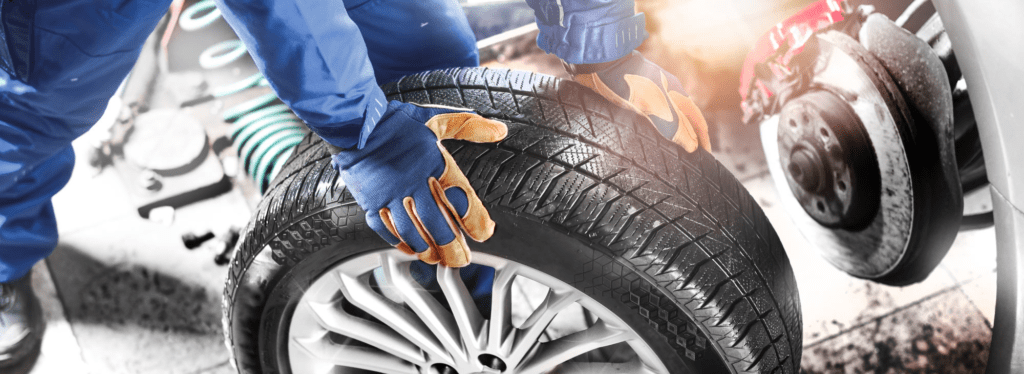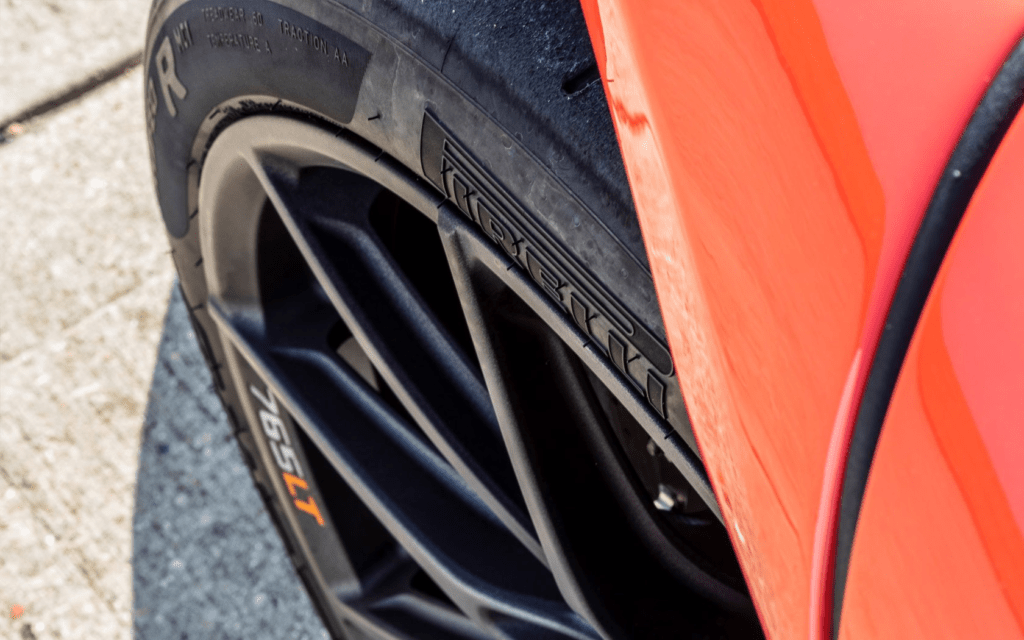Many drivers struggle to decide where to place new tires—front or back. Some experts believe that adding them to the back improves stability and prevents hydroplaning. Car enthusiasts and safety activists have discussed this subject.
Improved rear tires may reduce oversteer in slippery conditions, giving drivers more control. However, front-tire replacement advocates tout improved braking and cornering grip as safety benefits. Driving style, road conditions, and vehicle characteristics determine front or back placement. Next time you change tires, consider these angles!

Not sure where to put your new tires—front or back? This can be confusing. Discuss why professionals advise one way. Your advantages and downsides will be clear by the end, helping you choose tires next time.
Checkout From Amazon
Understanding Tire Wear and Performance
Importance of Tire Wear and Maintenance
Road contact wears tires. Checking them often can reveal uneven wear or balding. Your car’s alignment or suspension may be off.
You must maintain your tires to drive safely. Watching them can prevent mishaps from worn treads. Uneven tire wear can make driving harder and reduce road grip.
Tire maintenance prevents mishaps from worn treads. Not maintaining your tires can make driving dangerous.
Placement of New Tires
Change two tires in the back for stability. New rear tires minimize sliding when turning swiftly. New front tires go on the back if you’re not replacing all four.
This improves traction and prevents rain slides. When changing only the back tires, use the back wheels. It stabilizes your car and helps you stop safely in emergencies.
Proper Positioning of New Tires for Safety
Importance of Tire Placement
Positioning fresh tires on your car is crucial. It improves road grip, especially while turning or stopping abruptly. Keep your car steady by following the manufacturer’s instructions.
New front tires improve steering and braking. The front tires carry most of the weight, so they control turns and quick stops. New rear tires stabilize your automobile and prevent it from skidding.
Optimal Performance and Extended Lifespan
Putting new tires in the right spots makes driving safer and smoother. Placing them on the front helps with steering and braking, while putting them at the back prevents oversteering. This way, you can drive better in different conditions, like rain or snow, and your tires will last longer too.
Reasons for New Tires on the Rear Axle
Improved Stability
It’s super important to put new tires on the back wheels of your car. This makes your car more stable and gives you better grip when it’s wet outside. So, when you’re driving in the rain, good back tires can help keep your car from sliding around.

Preventing Oversteer
It’s super important to put new tires on the back wheels so your car doesn’t spin out when you turn. If the back tires slip, it’s hard to steer, and you might crash. So, make sure to get new tires for the back to stay safe!
Checkout From Amazon
Impact of Front Tire Wear on Vehicle Dynamics
Steering Response and Braking Distance
Worn front tires can make it harder to steer and stop your car. Checking them often is important to stay safe on the road.
Handling Capabilities and Traction
When your front tires are old, they can make it hard to steer and stay on the road when you turn or move quickly. This can cause accidents because your car might not be able to grip the road well. So, it’s important to check that your front tires have enough tread to keep you safe while driving.
Matching Requirements for Replacement Tires
Importance of Matching Replacement Tires
Make sure all your tires are the same size, can carry the same weight, have the same speed rating, and look similar. If they don’t match, your tires might wear out funny and make it harder to drive your car. Check your owner’s manual or ask a tire professional to get the right ones.
Ensuring Balanced Tire Placement
It’s best to put new tires on the back of your car for better control. This helps you stay safe when you need to make quick turns. Remember to keep all your tires the same and switch them around sometimes to make sure they wear out evenly.
Insurance Coverage and Tire Replacement Policies
Insurance Coverage
Some insurance plans can pay for new tires if they get wrecked on the road. Check your policy or ask your insurance company about tire coverage to avoid surprise bills. It can save you money and give you peace of mind. But remember that not all damages may be covered.
Tire Replacement Policies
When considering whether to put new tires on the front or back, it’s essential to follow guidelines provided by experts. In general, it is recommended to place new tires on the rear axle for better control and stability, especially in wet conditions.
Experts suggest that having more traction at the rear reduces the risk of oversteering and loss of control during emergency maneuvers. This setup enhances safety while driving, ensuring a balanced grip between the front and rear tires for optimal performance.
Checkout From Amazon
Optimal Tire Installation Locations Explained
Rear Axle Placement

It’s advisable to replace the back tires. This simplifies control, especially on icy roads. Your automobile handles better while turning or stopping with new rear tires. Nice: steadiness and minimal control loss. Bad stuff: front-wheel-drive autos may lose grip.
Front Axle Placement
When getting new tires, putting them on the front wheels of your car can help with grip when you speed up. But it’s important to check your car’s manual or ask a tire expert for advice to make sure you’re doing what’s best for your car.
Addressing Myths About Tire Placement
Rear Tire Grip Importance
Putting new tires on the back of your car is important for keeping you safe and in control while driving. It helps you steer better and stop without skidding. So, make sure to focus on the rear tires to stay safe on the road!
Importance of Balanced Performance
It’s better to change all four tires at once instead of just two. This helps your car drive better and stay safe. When all tires have the same amount of tread, they wear evenly and grip the road better.
Summary
New rear tires are crucial for driving safety and control. Always put safety over convenience when buying tires. It can greatly impact how your automobile handles.
Make sure your new tires are rear-mounted for safety! Use this information to choose tires wisely and drive safely. Don’t forget to place the new tires properly for your safety. Be wise and safe!
Frequently Asked Questions
Are new tires supposed to be placed on the front or back of a vehicle?
New tires are recommended to be installed on the rear axle for better control and stability, especially in wet conditions. This setup helps prevent oversteer situations, ensuring safer driving dynamics.
Can I mix old and new tires on my vehicle?
While it’s not ideal, mixing old and new tires is possible if they have similar tread patterns and wear levels. However, it’s best to replace all four tires together for optimal performance and safety.
How does tire wear impact a vehicle’s handling?
Uneven tire wear can affect your vehicle’s handling by causing imbalances in traction and stability. It can lead to issues like understeer or oversteer, impacting how your car responds during braking or cornering maneuvers.
What should I consider when selecting replacement tires?
When choosing replacement tires, factors such as size, speed rating, load index, tread pattern, and driving conditions should be taken into account. opts for high-quality tires that match your vehicle’s specifications for optimal performance.
Does insurance cover the cost of replacing worn-out tires?
Typically, standard auto insurance policies do not cover routine tire replacements due to wear and tear. However, some specialized coverage options may include tire protection plans that could help offset the costs of new tire purchases.

